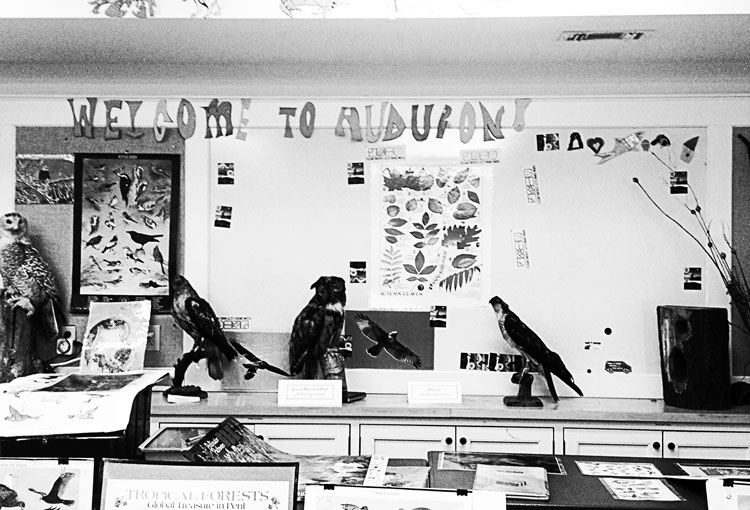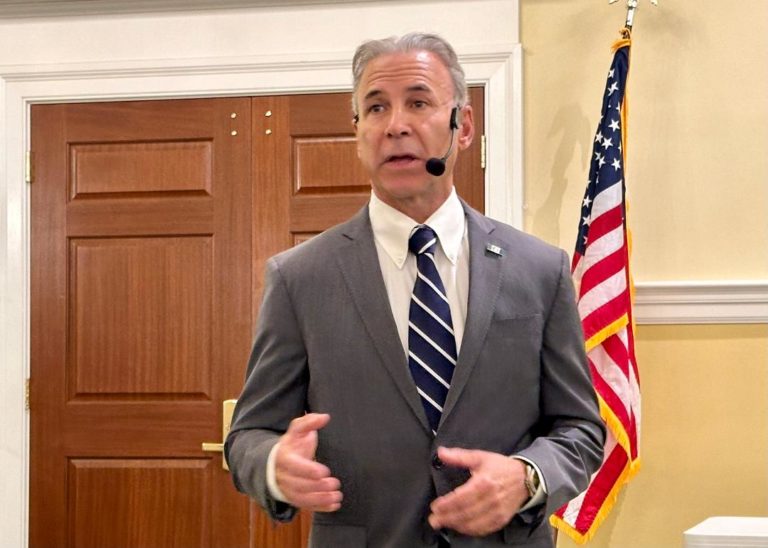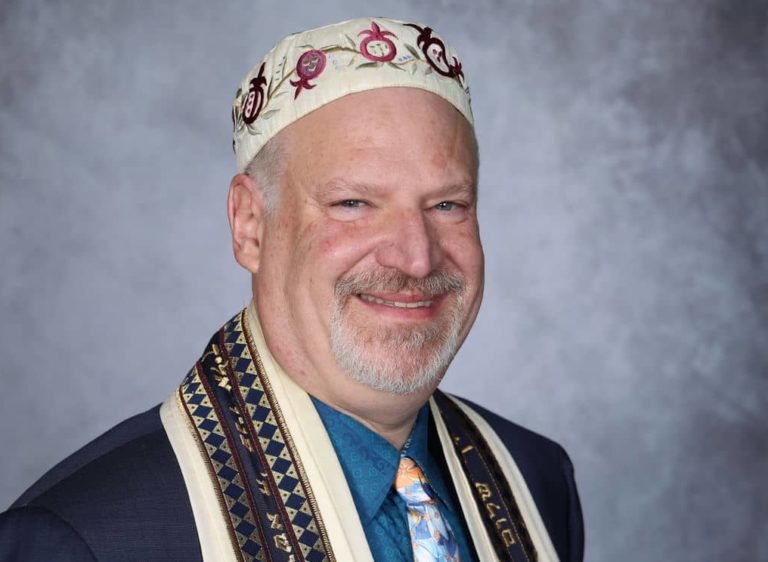
By Chéye Roberson
Sentinel Correspondent
 Although the Audubon Center of Greenwich had to cancel its nature hikes on I Love Audubon Day because of brutally cold weather, families enjoyed instead a cozy day indoors with baked treats and four legged friends.
Although the Audubon Center of Greenwich had to cancel its nature hikes on I Love Audubon Day because of brutally cold weather, families enjoyed instead a cozy day indoors with baked treats and four legged friends.
Audubon Greenwich, considered the most influential conservation organization in Connecticut for birds and other wild life, invited families to the center on Riversville Road to celebrate the organization with assorted coffees and homemade Valentine’s Day-themed baked goods. A 10-minute video about the history of the Audubon Center and its mission was also presented.
The Audubon’s miles of trails lead explorers through diverse habitats, including a hardwood forest, old fields, lakes, and streams. The kids didn’t mind not hiking the trail while learning the proper way to hold a turtle by supporting its shell. Eight-year-old Elle Benson, who frequents the Audubon with her mom and sister, said she “likes to help the animals,” including Feisty, a red-eared slider turtle whose lifespan is about 30 years.
The tour around the center was led by Susan Matthews, the education coordinator for Audubon Greenwich. She told kids and families about the commitment that buying one of these turtles from the pet store can be.
“Many people get them when they’re small and they keep growing and growing,” said Matthews. “This one came from a family that couldn’t keep her anymore. It’s just like adopting a dog or a cat.”
Later on, the kids fed Fiesty by placing green lettuce into her tank, as turtles prefer to eat their vegetation while it’s submerged.
The kids also gathered around a coyote pelt to stroke as they asked questions about the creature. The center has several species of taxidermy birds on display; many of them are hundreds of years old.
Maura and Steve Walsh called Audubon Greenwich “a real treasure” as their daughters, Mariah, 13 and Kate, 12, created Valentines and animal-themed arts and crafts.
 “The grounds are beautiful, but you learn so much,” said Steve Walsh. He mentioned an instructor who was particularly enlightening. “Ted Gilman is just a wealth of information—a good teacher, patient.” The National Audubon Society has recognized Gilman, Audubon Greenwich’s senior naturist, as teacher of the year.
“The grounds are beautiful, but you learn so much,” said Steve Walsh. He mentioned an instructor who was particularly enlightening. “Ted Gilman is just a wealth of information—a good teacher, patient.” The National Audubon Society has recognized Gilman, Audubon Greenwich’s senior naturist, as teacher of the year.
The Walsh family has been coming to Audubon Greenwich for many years, citing its healthful effect on their daughters. “It’s a good antidote to devices—being out in nature,” Steve Walsh said.
The Audubon Center of Greenwich opened in 1942 on land donated by Eleanor Clovis Reese and H. Hall Clovis. For over 74 years the center has utilized land stewardship, science, education, and advocacy to work across Connecticut in order to preserve habitats and protect bird species. The organization helps identify “important bird areas,” or IBAs. In 2014 16 new IBAs were identified, raising the number to 48 in Connecticut.
The organization also works to prevent air and water pollution, reduce pesticide use, and reduce the impact of global climate change on birds, wildlife, and people.
There is a seasonal vernal pool near the Audubon Center that is created by snowmelts. According to Matthews, it fills up in late fall and is gone by mid-August. The pool is an ideal breeding ground for amphibians such as spotted salamanders.
Audubon Greenwich was the National Audubon Society’s first center in the United States. The conservation organization has an influential voice in municipal, state, and national legislature. About $3.4 million is secured by the organization in state investment, allowing for permanent protection of 1,000 acres of coastal forest in Connecticut.
The organization has flagship programs that help facilitate their mission. The Urban Oases for Migrating Songbirds program gives people the knowledge and tools they need to reduce pesticide use and incorporate wildlife-friendly plantings at home, work, school and public spaces. There are nine urban oases restoration sites in the state, with 17 partnering organizations.




